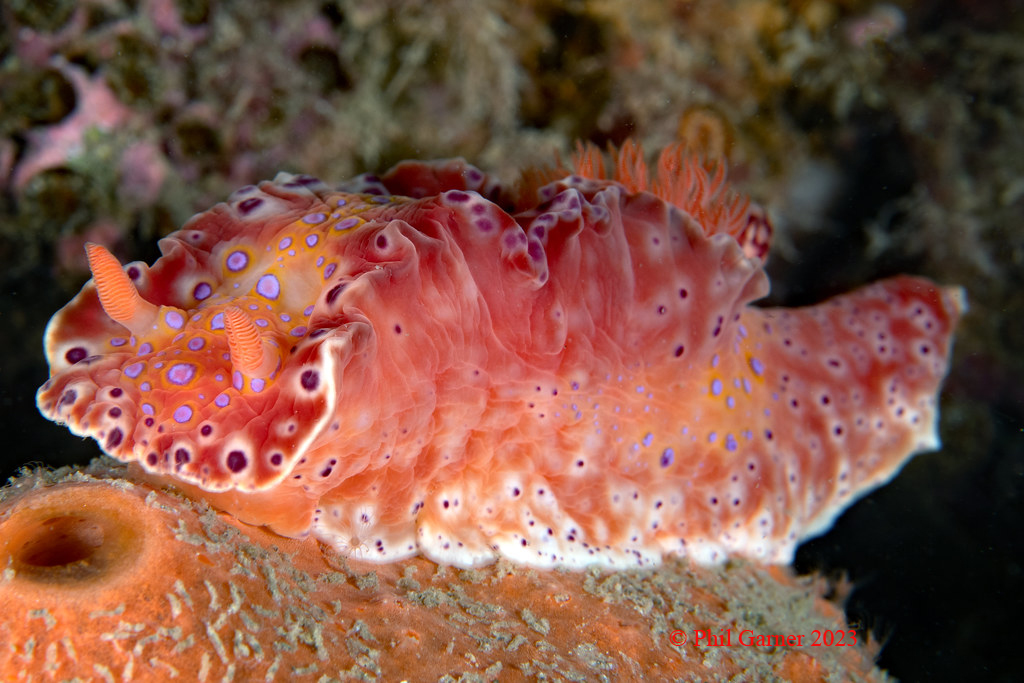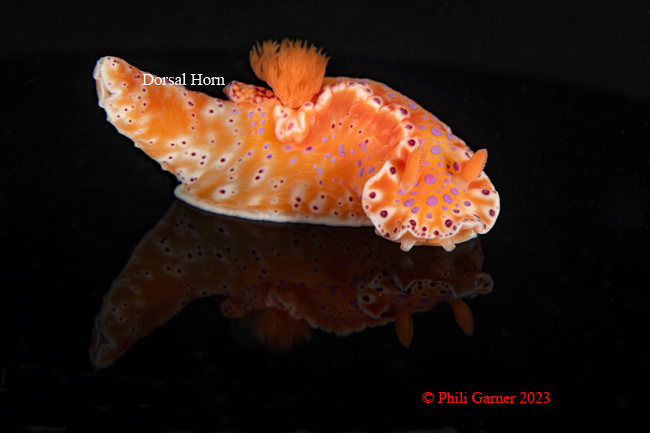 |
Ceratosoma brevicaudatum
Images courtesy of Phil GarnerRapid Bay Jetty, South Australia
 |
Ceratosoma brevicaudatum Abraham, 1876
Phil Garner recently sent in images of
The following is a discussion of this odd dorsal "horn" by Bill Rudman on his
Sea Slug Forum
"...
Ceratosoma trilobatum usually have a long recurved dorsal 'horn' which sticks up from the body behind the gills. This horn has an interesting defensive function because it is where the animal stores distasteful and noxious chemicals its has removed from its sponge food. The horn appears to act as a sacrificial lure, tempting fish to take a bite. When or if they do they get a mouth full of nasty chemicals which teach them to leave Ceratosoma alone. As the 'hom' has no other function, the slug can live quite happily without it.
It seems that Ceratosoma brevicaudatum represents an early stage in the evolution of the dorsal horn. In the close-up alongside I have ringed the swollen 'bump' which is found in this species. It is packed full of noxious chemicals and is usually more brightly coloured thyan the rest of the body - again acting as a lure. If you look at some of the other messages on this species, which are attached to the Fact Sheet, you will see that in juveniles the horn is even more brightly coloured.
The name brevicaudatum means 'short tail' in Latin, which is a reference to this very short dorsal horn..."
One has to say again, isn't nature absolutely amazing!
|
San Diego, CA 92113
April, 2023
Send Mike email at mdmiller1@cox.net
Reference:
Abraham, P. S. (1876). Notes on some genera of nudibranchiate Mollusca, with notices of a new genus and some hitherto undescribed species, in the collection of the British Museum. Annals and Magazine of Natural History. (4) 18: 132-146.
 |
Phil Garner has been scuba diving since 1989. Before that, he enjoyed free diving the many reefs around Palos Verdes. He met Merry Passage during a beach dive at Marineland in 2006 and they have been a team ever since. Phil is the author of Diving The Palos Verdes Peninsula . He and Merry can be found branching as often as possible.
Phil Shoots with a Nikon D850 with a 60mm lens.
Send Phil email at pacificcoast101@yahoo.com |

|
